
by fmadmin | Mar 15, 2024 | Content, Digital, Strategy, Uncategorised
Discover video marketing and how it could benefit you.
“90% of marketers say video has helped them generate leads.” – Wyzowl
Incorporating video into your digital marketing strategy and communications is highly effective in influencing, educating, and communicating with your target audience.
So, let’s dive into it.
What is video marketing?
Video marketing is using video to market your product or service across a variety of digital channels. Video evokes emotion, allows you to tell your stories and genuinely connect with an effortless dialogue.
So why is video marketing important?
“Video is worth 1.8 million words.” – Dr. James McQuivey of Forrester
People genuinely don’t seem to read as much anymore and with the speed people digest their media, integrating video into your marketing strategy has become a necessity.
Plus, video marketing has some amazing benefits
Engagement
Video can capture attention and keep audiences engaged more effortlessly than text or static images. The dynamic nature of video, especially if you get the visuals and audio right, creates a memorable brand interaction that goes deeper than an article or blog.
Shareability
Social media platforms prioritise video content, making it more likely to be seen and shared by customers and team members – increasing your brand’s reach and visibility.
Conversion
Studies consistently show that incorporating video on landing pages or in email campaigns significantly increases click rates. 66% of people prefer to learn about a product or a service through video over reading. Whether it’s telling your brand story, showcasing a product or sharing customer testimonials, video provides a more naturally persuasive and convincing way to communicate with potential customers.
Improved SEO
It is not only social media, good old Google favours websites with video content, ranking them higher in search results. Video snippets in search engine results pages can also increase click-through rates, driving more traffic to your website.
Building trust
Video humanises your brand and gives it a personality, something that is harder to achieve in the B2B space. Whether it’s through workplace footage, interviews with team members, customer testimonials, introductions or demos of your products/services – video helps build understanding, trust and credibility with your audience.
Company culture
Video is a powerful medium for showcasing your company culture. It gives viewers a glimpse into your workplace environment, values, and team dynamics. In a competitive market it can help you attract like-minded employees as well as foster a sense of pride and belonging among your employees, partners and customers.
Strengthening your brand image
Video allows you to convey your brand’s personality, values, and unique selling proposition in a way that resonates with both your team and your target audience. Through storytelling, visuals, and music, you can evoke emotions and create a lasting impression that strengthens brand recall.
Many B2B brands think video is for FMCG and consumer brands… I beg to differ
“Business to business products and services are often harder to understand, so using video to create a story that explains what you do and at the same time builds pride and emotional connection to why you do it, is a very powerful communication tool.” – Caitlin Dillon, Focused Marketing
Video can of course be more expensive than other creative output, but it can be cleverly planned to optimise your return on investment. By planning ahead and working closely with our video partners, we help our clients capture the content they need to tell their stories across a number of channels and elements of their business.
Recent professional shoots for our customers have incorporated the filming of products, equipment, staff stories, customer testimonials and more. This content will be shared in a variety of formats such as brand videos, product launches and social channels across the year, maximising ROI on the professional shoot. Check out our blog post covering the various types of video marketing here to learn more.
There is no doubt that video increases engagement, understanding and brand trust, and in turn boosts conversion. And while everyone is a videographer these days with your phone in your pocket, we highly recommend engaging a professional videographer if you are using it to build out your digital content marketing strategy. Polish is so important to brand image.
Talk to us if you want support with building video into your 2024 content marketing strategy.
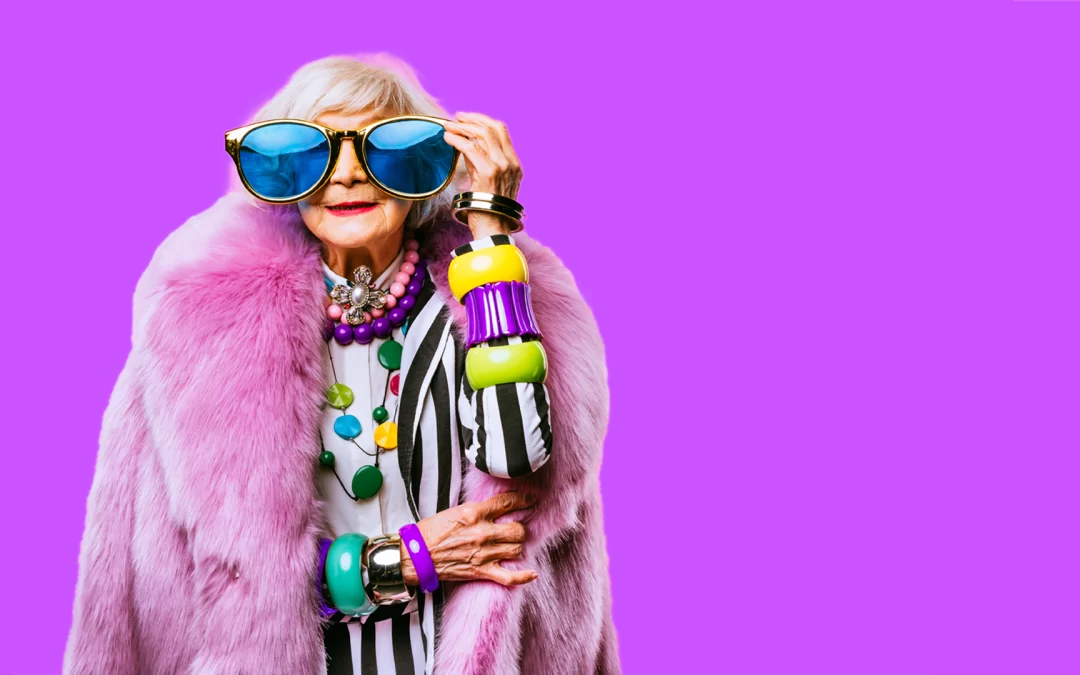
by fmadmin | Feb 8, 2024 | Digital, Strategy
As we step into 2024, marketing trends continue to evolve at an exponential pace. With new technologies and shifting consumer behaviours, how can businesses stay ahead?
In this article, we’ll explore the latest marketing trends for 2024 and equip you with 6 actionable tips and tricks to maximise your return on investment (ROI).
1. Optimise for voice search
With the rise of voice-enabled devices and virtual assistants, optimising your content for voice search is no longer optional – it’s essential. Tailor your SEO strategy to accommodate natural language queries and long-tail keywords that align with conversational search patterns. By optimising for voice search, you can enhance your brand’s discoverability and drive traffic to your website.
2. Prioritise video marketing
Video continues to dominate, captivating audiences and driving higher engagement rates. Incorporate video content across your marketing channels, including social media, websites, and email campaigns. From product demos and testimonials to brand videos, create meaningful connections with your target business audience, delving deeper to enhance engagement and optimise ROI.
3. Hyper-personalise customer experiences
Personalisation is the key to standing out and nurturing customer loyalty in a busy market. Leverage data-driven insights to deliver relevant and tailored experiences across every touchpoint of the customer journey. From personalised recommendations and dynamic content to customised offers and messaging, prioritise personalisation to deepen connections with your audience and drive repeat business.
4. Embrace AI and automation
Artificial Intelligence (AI) and automation have revolutionised marketing strategies, enabling businesses to streamline processes, enhance targeting, and deliver personalised experiences at scale. Invest in AI-powered tools and automation for data analysis, segmentation, and personalising the customer’s experience to optimise campaigns and deliver results.
5. Leverage user-generated content
In the age of social media dominance, user-generated content (UGC) reigns supreme. Encourage your customers to create and share content related to your brand, products, or services. UGC not only promotes authenticity but also amplifies brand reach and engagement. Implement user-generated content campaigns, competitions, or hashtags to harness the power of peer influence and boost ROI.
6. Elevate engagement: empower your audience with interactive content
Interactive content, such as quizzes, polls, surveys, and interactive infographics, not only captivates audiences but also encourages active participation and engagement. Incorporate interactive elements into your marketing campaigns to provide value, gather valuable insights, and encourage meaningful interactions with your audience. By creating interactive experiences, you can differentiate your brand, stimulate conversions, and engagement.
Through understanding the latest trends and developments you can formulate effective marketing strategies to connect with your audience and maximise your efforts.
For more information and assistance with your marketing contact our team at Focused Marketing and make it happen!

by fmadmin | Dec 4, 2023 | Digital, Strategy
The end of third-party cookies signifies a shift toward greater privacy protection
Do you remember when Google announced their plan to phase out third-party cookies in Chrome, in 2020? Well, their plans are on track and the phase-out will begin in Q1 2024. This will essentially put an end to cookie-based advertising.
For brands who rely on third-party cookies for digital advertising, this means drastically changing their strategy. For consumers and web users, this change signifies a welcome and well-overdue shift toward greater privacy protection online.
In this blog, we discuss how and why brands must put privacy at the forefront of online experiences, amid a digital landscape that is drastically changing.
Key points:
- Privacy-conscious consumers are demanding greater transparency and want more control over how their data is used
- A transformation is unfolding in the online data environment where for years, brands have used third-party cookies as a key part of their digital advertising strategy
- Brands need to rethink how to prioritise privacy to gain and keep consumer trust
How do third-party cookies fit into the mix?
Cookies are small pieces of data stored on a user’s device by websites they visit. These data files serve purposes including improving the user experience, remembering user preferences, and tracking website usage. Websites use cookies to store information about a user’s session including login credentials, language preferences, and items in a shopping cart. There are different types of cookies, including:
- Session cookies: These are temporary cookies that are erased when the user closes the web browser. They are used to store temporary information, such as a user’s session ID, which is necessary for the proper functioning of certain website features.
- Persistent cookies: Unlike session cookies, persistent cookies remain on the user’s device even after the browser is closed. They have an expiry date and are often used to store information such as login credentials or user preferences for future visits.
- First-party cookies: These are set by the website the user is visiting. They are commonly used for purposes like remembering user preferences or maintaining a user’s logged-in state.
- Third-party cookies: Third-party cookies are the mechanism that enables cross-site tracking and several major browsers. These are set by domains other than the one the user is visiting. Third-party cookies are often used for tracking and advertising purposes. Advertisers and analytics services may use them to collect information about a user’s browsing habits across different websites.
Advertisers have long relied on cookies to track customers, display targeted advertising, and tailor customer experience. With a series of recent high-profile data breaches in Australia, it’s no surprise customers want greater control over how their data is collected and used.

Consumers want greater control over privacy. Image by John Schnobrich via Unsplash.
The Optus breach in September 2022 impacted 9.8 million customers, Medibank in December 2022 impacted 9.7 Million people, and the Latitude breach in March 2023 impacted 14 million customers, according to Upguard.
Ensure you obtain informed consent before collecting data:
- You must obtain customer consent before any sort of data collection
- Provide transparent information about how data will be used, stored and protected, so customers understand what they’re consenting to
- Your privacy policy must be designed in line with relevant requirements, including those set out by the Australian Information Commissioner
A greater demand for privacy
Three-quarters of Australians feel data breaches are one of the biggest privacy risks they face, according to the latest Australian Community Attitudes to Privacy Survey, released in August 2023. That is an increase of 13% since the survey was conducted in 2020.
Google says their phase-out of third-party cookies is an effort to better protect user privacy. With the impending phase-out currently on track to be complete in 2024, a significant transformation is unfolding in the Australian data environment. Safari and Firefox have already undertaken similar actions and with Google Chrome owning most of the market share, its phase-out will essentially render third-party cookies redundant.

Google says their phase-out of third-party cookies is an effort to better protect user privacy, image by firmbee via Unsplash.
“As part of the Privacy Sandbox project, Chrome is phasing out support for third-party cookies and proposing new functionality for cookies along with purpose-built APIs to continue supporting legitimate use cases while preserving user privacy.” Privacy Sandbox project
As more and more consumer data is collected, tightening up data control is of increasing importance. Privacy laws are rapidly changing to accommodate the fast-paced digital landscape and brands must ensure that they stay up to date with all relevant guidelines. In Australia, businesses are required to protect customers’ personal information. Those with an annual turnover of $3 million or more must comply with the Privacy Act and small businesses with an annual turnover of less than $3 million still have obligations. Depending on business activities they may also be required to comply with the Act.
Ensure customers are aware of how data will be stored:
- When privacy policies are changed or updated, this must be proactively communicated to customers, ensure you lay out what has been updated and why it is taking place
- To increase confidence and trust, provide clear pathways for customers to revoke or change consent
Brands that place transparency at the centre will gain trust over the long term
As brands re-strategise their digital advertising approach, those who prioritise transparency will gain and hold customer trust. Brands should make it easy for users to understand what information they collect, how their information is stored, and what the company is doing to keep it secure, as well as providing clear pathways to change or revoke consent.
Are you eager to prioritise privacy as part of your digital brand experience? Contact our team at Focused Marketing and make it happen!
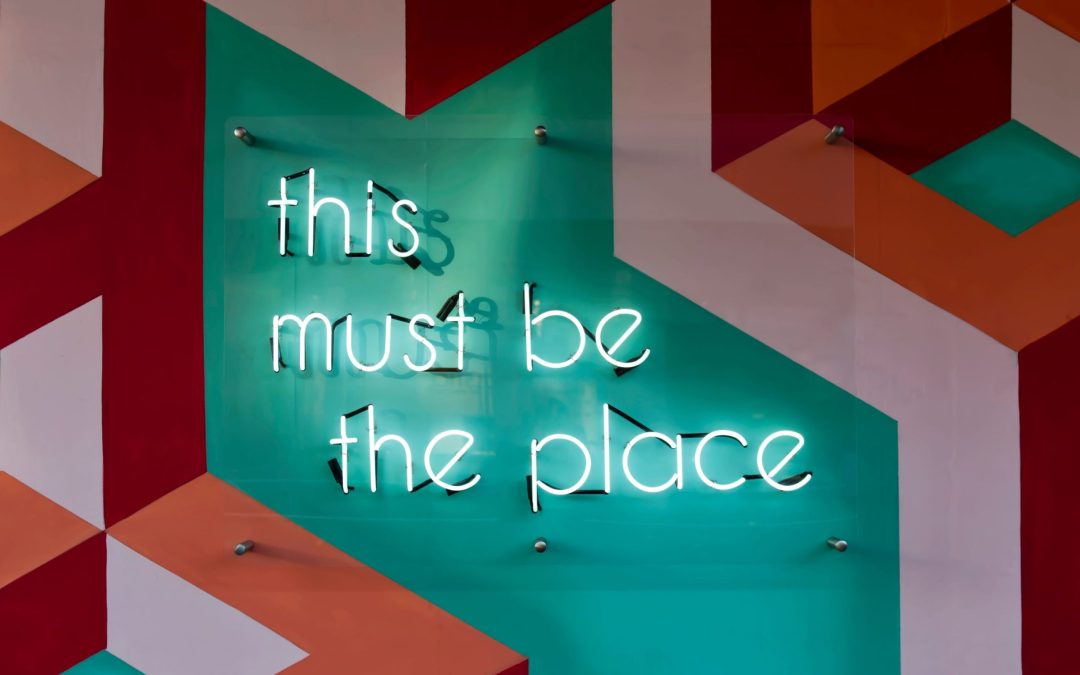
by fmadmin | Nov 6, 2023 | Content, Design, Digital
10 factors to consider when deciding who will build your website
So, you need a new website. Maybe you’re considering hiring a web developer, or perhaps you’re eager to invest in a full-service marketing agency.
An online presence is non-negotiable for any business, serving as your virtual storefront and the first interaction between you and your potential customers. At Focused Marketing, we are often approached by clients who want to create a new website but are wondering who to help them.
A full-service agency may be a larger upfront investment than hiring a web developer, but prices must be weighed up against which route will deliver the best value for money against your requirements. A developer and an agency can both build a website, but an agency will also ensure it does what it’s meant to – whether that be educating, engaging, or converting visitors into customers.
Below, we outline ten factors with crucial questions to ask when considering a developer vs. marketing agency. If you or your developer can’t answer these, you may need to talk to a marketing agency!
1. Goal-oriented conversion, customisation and optimisation
The first thing to consider is the purpose of your website. An agency will take the time to get to know your business and ensure it’s fit for purpose. Marketing agencies employ conversion optimisation techniques, encouraging actions that align with your business goals, be it making a purchase, completing a form, or subscribing to a newsletter. With a collaborative team of creatives – graphic designers, website developers, UX/UI specialists, and copywriters—they ensure that your online presence is visually appealing and optimised for a seamless user experience.
From layout and design to content and functionality, agencies customise every aspect of your website. Graphic designers create elements aligned with your brand identity, web developers ensure a responsive interface, UX/UI specialists focus on user experience, and copywriters craft persuasive content guiding visitors toward conversion actions.
Consider:
- What strategies are in place to continually refine and improve the conversion rate over time?
2. Capturing attention (within seconds)
You have about 8 seconds to capture the attention of a visitor before they leave your site. Marketing professionals within an agency understand this and will craft your website content to engage upon first glance.
“Users often leave webpages in 10 – 20 seconds, but pages with a clear value proposition can hold people’s attention for much longer. To gain several minutes of user attention, you must clearly communicate your value proposition within 10 seconds.” – Jakob Nielsen
Consider:
- Do you know how to optimise your homepage to deliver a compelling message?
- Are you using visual elements to resonate with your audience within those crucial seconds?

At 8 seconds, the average attention span is shorter than that of a goldfish
3. Creating lasting connections
Visual appeal is your secret weapon against fleeting attention spans. A design that is both unique and memorable ensures visitors don’t just pass through but forge a lasting connection with your brand. Think of your website as a visual storybook – each page should unfold a narrative that captivates and leaves a lasting imprint in the minds of your audience. Marketing agencies don’t create websites alone, they are experts at creating experiences that resonate.
Consider:
- To create a lasting impression, how will you ensure your website design is aligned with your brand guidelines?
4. Tailoring content for clarity and engagement
You might know your product inside-out, but struggle with effectively communicating the benefits it offers. A marketing agency not only creates or refines your content, but tailors it for your target audience.
Consider:
- Do you have a content strategy that will connect with your audience?
- How will you use content optimisation techniques to enhance search engine visibility and user engagement?
5. Ensuring accessibility and audience-centric writing
Creating content for an audience unfamiliar with your industry requires a delicate balance of education and persuasion. Many brands struggle to write for an audience who is unfamiliar with their products or services. Marketing agencies have the skills to bridge this gap, ensuring web content connects with the target audience. This extends beyond language – website design and content must be tailored to ensure accessibility for all users.
Consider:
- How well does your content resonate with your audience personas?
- What strategies do you use to tailor your messaging to different audience personas?
- How will you ensure content and web design is inclusive of all users?
6. Elevating your website from existence to discovery
A developer might build a functional website, but without on-page SEO, your site might get lost in the digital noise. Marketing agencies optimise your website for search engines, making sure your potential customers can find you.
“Think of your website as an island, metaphorically speaking. You may have a beautifully designed and constructed virtual destination, the only problem is your guests can’t find you on the map! Unless you provide a way for viewers to easily find and travel to your website, there is no point renovating it.” – Jessica Bye, Focused Marketing
Consider:
- Beyond the development phase, how will you optimise your website for search engines?
- How do you ensure your website is discoverable and easily navigable for your target audience?
7. Creating a seamless path to conversion
Every piece of information on your website should have a purpose and a placement. Understanding the path your visitors take is crucial in ensuring that every piece of information contributes to the overall user experience.
Marketing agencies strategically organise your content, guiding visitors through a journey that leads to conversion.
Consider:
8. Highlighting your brand’s USP through strategic messaging
Your unique selling proposition (USP) and key messaging must convince and compel your audience. Marketing agencies delve deep into understanding the intricacies of your business, conducting analysis to identify what distinguishes you from the competition.
Through understanding the nuances of your products, services, and values, a marketing agency will assist you in ensuring your value proposition shines.
Consider:
- Are you confident that your website effectively communicates your USP?
- How have you refined and communicated your USP to ensure that visitors understand what sets your business apart in the competitive landscape?
9. Creating an empowering user experience
We’ve all used websites that are unclear or downright frustrating. Visitors should effortlessly glide through your website, finding information intuitively and without friction. How visitors interact with your site greatly impacts their perception of your brand.
A marketing-focused approach optimises user experience, ensuring seamless navigation and encouraging visitors to explore further and ultimately convert. Marketing agencies employ user-centric design principles, strategically placing elements to guide visitors with clarity. This isn’t just about making navigation easy; it’s about creating an experience where visitors feel empowered and in control of their journey.
Consider:
- How will you design and evaluate your site’s visitor journey?
10. Your website is never finished!
The digital landscape is ever-evolving. A marketing agency doesn’t just build your website and leave; they continually analyse data, gather insights, and make improvements to ensure your online presence stays effective and competitive.
Consider:
- How will you continually improve your online presence? What measures will you use to respond to changing trends and user behaviour?
A developer can create a perfectly functional website, but it takes a marketing-focused agency to transform it into a powerful sales and branding tool. Remember, your website isn’t just a digital placeholder, it’s an interactive experience that can make or break your business. Invest wisely, because the right website isn’t an expense – it’s an investment in the future success of your business.
For more information and assistance with your marketing strategy, contact our team at Focused Marketing and make it happen!
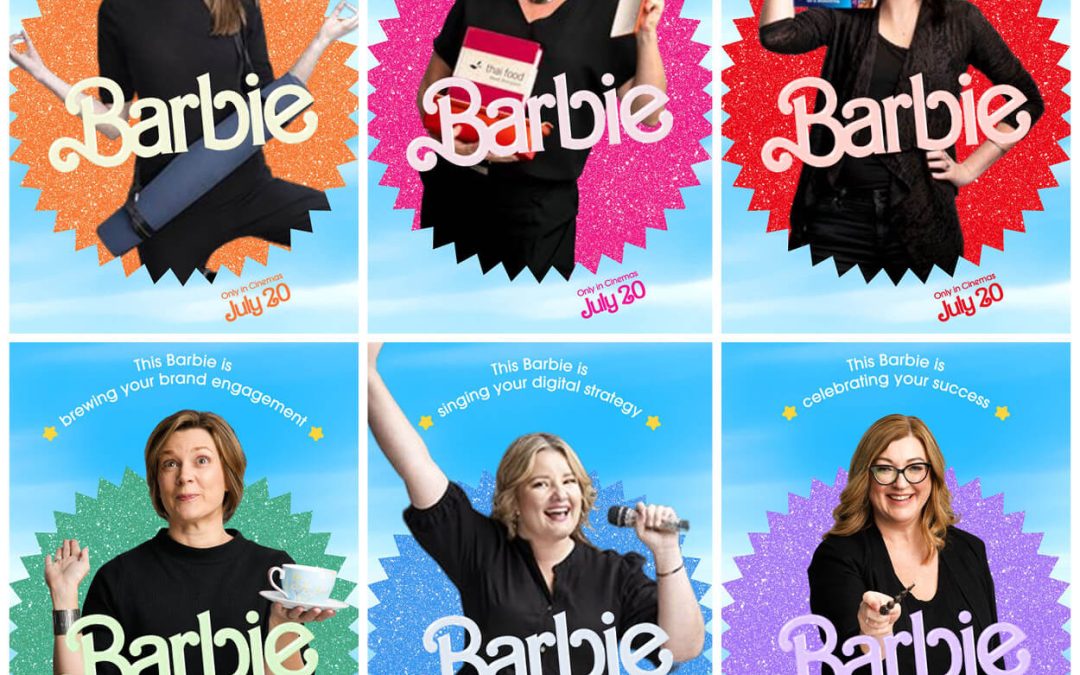
by fmadmin | Aug 1, 2023 | Content, Digital, Strategy
Amplify your marketing strategy with these simple yet effective marketing tactics from the Barbie movie campaign.
Barbie is officially the biggest movie of the year, bringing in a staggering $162m in America and over $330m worldwide in its opening weekend, according to Comscore.
Barbie, the iconic doll that has captured hearts for decades, has cast a spell on audiences worldwide with her sensational movie marketing campaign. The campaign’s success lies in its use of various strategic marketing techniques that, upon closer examination, can be embraced by any business.
From storytelling magic to cultivating a sense of community, here are 6 Barbie movie marketing tactics that can maximise any marketing initiative, regardless of your budget.
1. Create a compelling campaign narrative to drive engagement
To drive engagement, it is essential to prioritise storytelling over simple product/service promotion. Taking a more holistic approach, considering the overall experience and how each touchpoint can build a narrative will ensure a lasting impression on your target audience.
To do this, identify key strategic milestones in your marketing strategy and leverage your marketing activities and resources to build anticipation over your campaign period. Consider sneak peaks, teasers, and “easter eggs” to create excitement and drive curiosity.
Through the strategic timing of these moments, you can maximise your campaign messages and return on investment (ROI).
2. Tailor your marketing messages to your audience segments
In addition to creating a compelling narrative, gain a thorough understanding of each of your audience segments and tailor your marketing messages, channels, and efforts.
Effective audience segmentation requires thorough research, data analysis, and a deep understanding of consumer behaviour, so be sure to pay close attention to these.
Through audience segmentation, you can identify key segments that will drive a greater return on investment, as well as personalise their experience and ultimately achieve better results.
3. Integrate multi-channel marketing and new technology
The Barbie movie campaign employed a multi-channel marketing approach to maximise its impact. Leveraging traditional advertising methods, including television commercials, billboards, and print media, significant exposure was generated amongst both children and parents.
Additionally, the campaign embraced the digital age with a strong online presence, viral social media campaigns, and artificial intelligence including an online poster generator.
The Barbie movie marketing campaign focused on creating immersive experiences that extended beyond the cinema screen, including a free boat cruise party and Barbie’s Dreamhouse. This integration allowed the brand to connect with its audience wherever they were, fostering engagement and excitement around the movie. These initiatives not only encouraged fan engagement but also promoted user-generated content and social sharing, overall expanding the campaign’s digital footprint.
4. Promote strategic partnerships and collaborations
Understanding the significance of strategic partnerships, Barbie’s collaborative approach sparked a global sensation. Barbie collaborated with over 100 international brands including Barbie-themed ice cream, roller skates, and a Barbie Xbox. Partnering with recognisable brands and influencers not only enhanced the movie campaign reach and exposure, but also promoted a higher level of prestige and relevancy for the brand.
Look for strategic partnerships and collaborations that align with your brand and share similar values to extend your reach and target new audiences.
5. Evoke emotion and create a sense of community
Create content that encourages conversation. Offer unique perspectives, valuable insights, or entertaining experiences, to capture the attention of your audience. Engage with your audience by creating a sense of community. Host discussions, reply to comments, invite user-generated content and interactive elements.
The Barbie campaign amplified key social trends and topics including diversity, inclusivity, and empowerment. Fans were encouraged to share their Barbie stories, submit ideas, and engage in contests through social media platforms e.g. Barbie-core, #BarbieSummer.
This highly interactive approach not only generated excitement but also fostered a community of loyal and engaged Barbie enthusiasts, further amplifying the campaign’s message and impact.
6. Leverage the power of your brand
Barbie has a long-standing legacy as an icon of fashion, beauty, and empowerment for girls. The campaign capitalised on this by maintaining the core brand values and traditional brand identity, while the movie resonated with modern audiences with its progressive themes around feminism and inclusivity. A sense of nostalgia was created throughout the campaign period, with the brand visuals and references striking a chord with older audiences who fondly recalled the Barbie of their childhood.
What is unique to your brand and what does it stand for? Be authentic and consistent with your brand’s tone of voice and visual identity. Leverage the brand equity you have and amplify this across your marketing strategy.
Did you know… “Barbie” is estimated to have had a $150 million marketing budget, according to Variety (The Insider).
And while you may not have a casual $150m at your disposal like Barbie, you can leverage these marketing tactics in your next campaign and enjoy great results.
Looking for more information and assistance with your next marketing campaign? Contact us today and our team will be happy to Make It Happen!
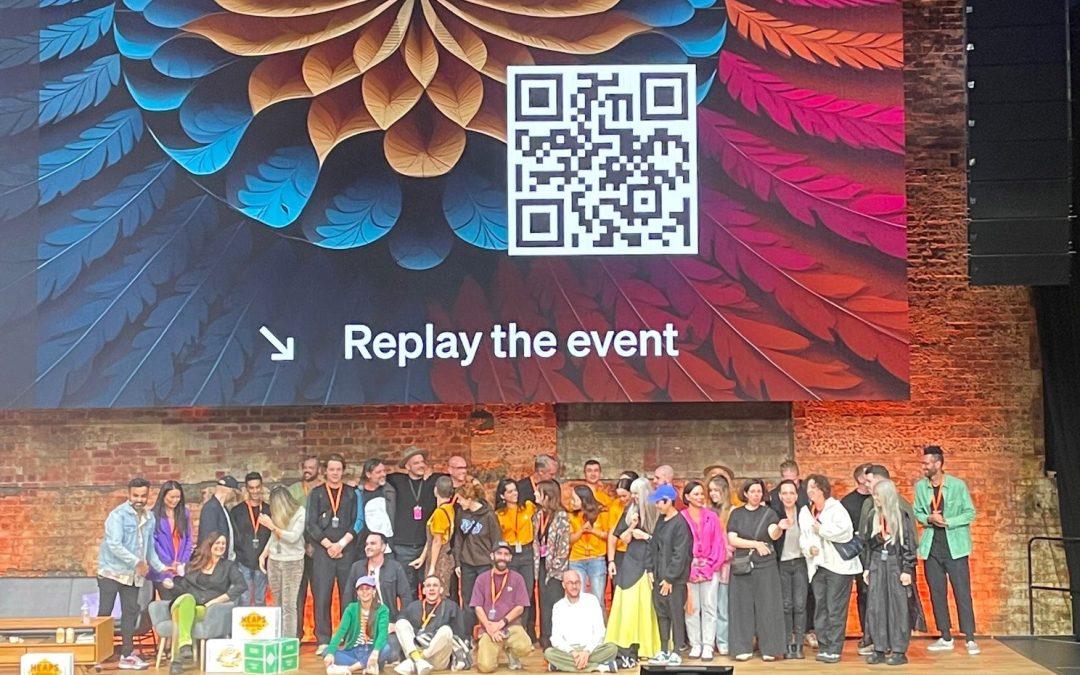
by fmadmin | Jun 20, 2023 | Digital, Strategy
We share the most impactful design themes featured at The Design Conference 2023 in Brisbane, Australia
After attending The Design Conference this month for the second consecutive year, I’m excited to share my experience and key takeaways from this amazing event.
This three-day event (7-9 June) at Brisbane’s iconic Powerhouse seeks to unite and inspire our creative and business communities, with keynote presentations, firesides and insightful discussion panels featuring a lineup of national and international guests at the top of their game.
Each year is a transformative experience where I’ve walked away feeling invigorated with a renewed sense of purpose and passion for what I do. So I thought I would share it with you!
“Be bold. Let the transformation begin.” – The Design Conference
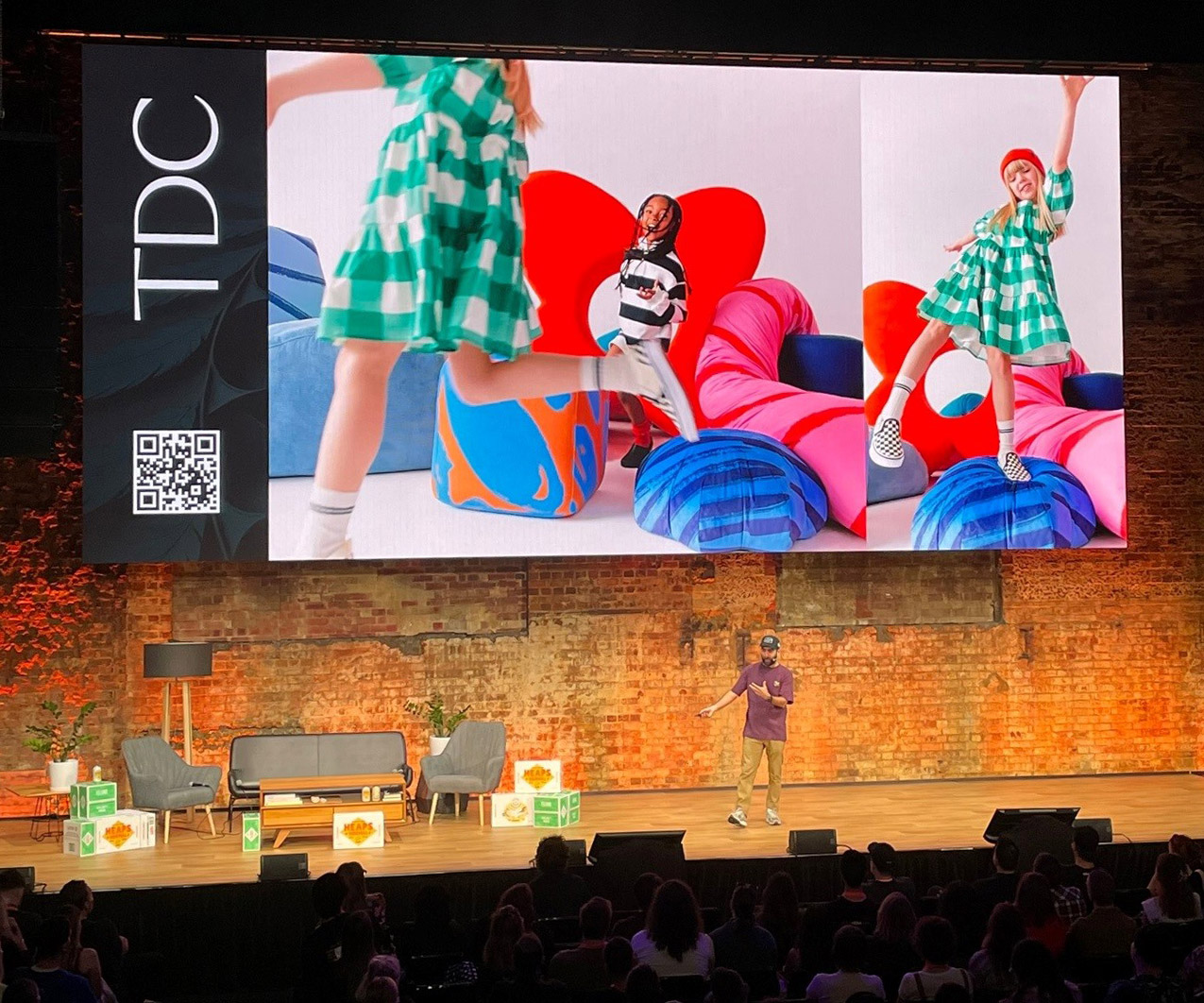
1. Never stop playing.
This theme serves as a reminder to embrace our sense of play, child-like wonder and curiosity as creators, professionals, and businesses alike. To continue asking “what if?”, to continue experimenting, and not let the fear of making mistakes hold you back.
Wonderful Brisbane-based creatives Ellen Powell (Founder of The Somewhere Co), designer and artist Rachel Burke, and potter Bonnie Hislop demonstrated their unique sense of colour, playfulness and whimsical aesthetic that injects a ton of fun into the everyday. From The Somewhere Co’s vibrant patterned lunch satchels to Rachel Burke’s fabulously kitsch tinsel coats, to Bonnie Hislop’s vases adorned with rainbows, glitter and tongue-in-cheek catchphrases, their pieces inspire boundless joy.
The power of play, imagination and exploration has also driven the success of many agencies including Beetroot, based in Thessaloniki, Greece. Keynote speaker Alexis Nikou, co-founder of Beetroot, demonstrated that we should never underestimate the power of self-initiated projects. Their constant doodling and scribbling have not only contributed to many client projects, but also led to them creating a multi-disciplinary art exhibition called “The Greek Monsters”. The series playfully reimagines the classic monsters of Greek mythology to symbolise the poor representation of modern Greece in the media at the time. The exhibition gained widespread popularity, eventually touring internationally and raising the agency’s profile.
Play increases engagement, creativity and innovation which can have an amazing impact on your design, project or business.
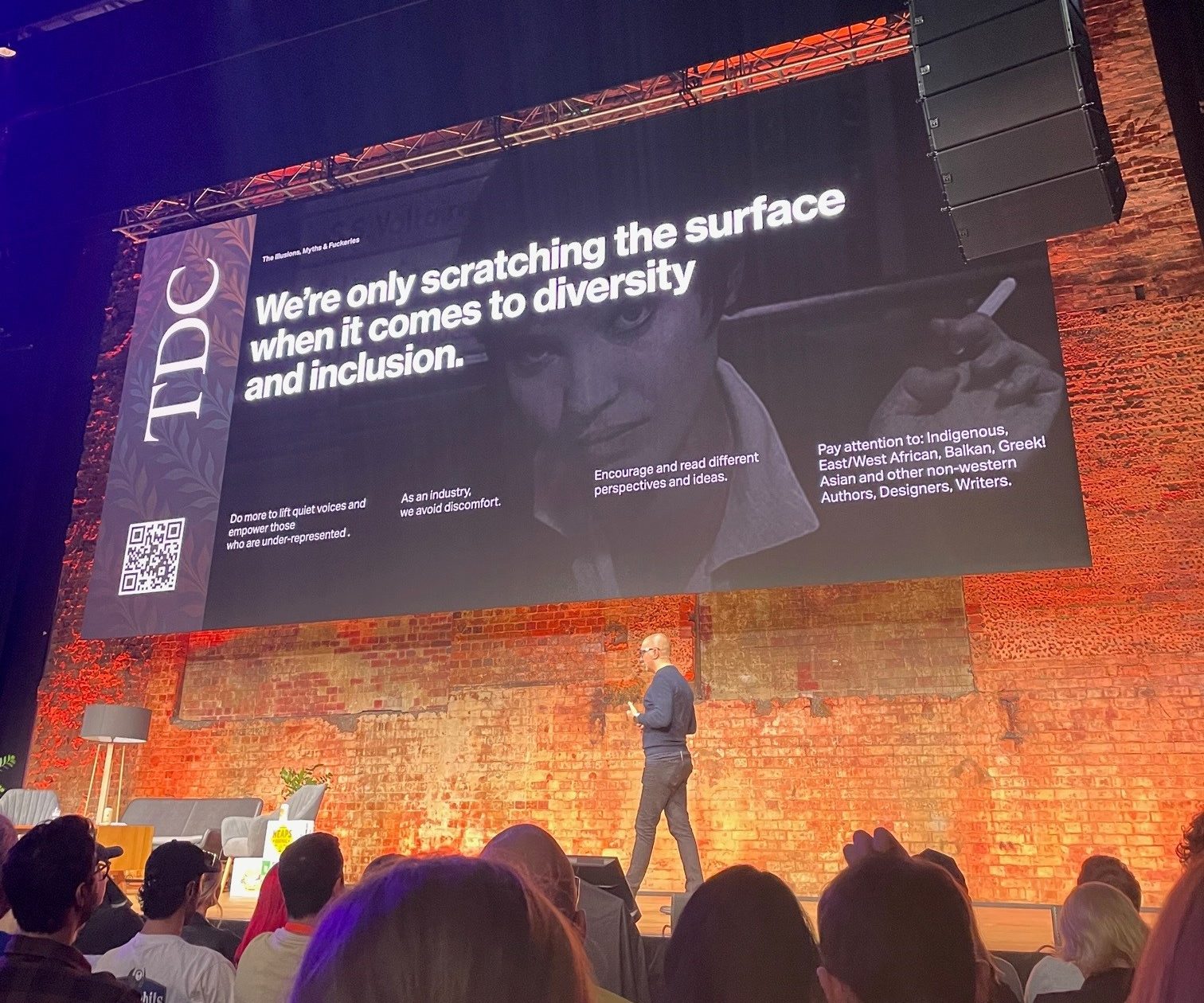
2. Celebrate and amplify diverse voices.
Throughout the conference, we were encouraged to embrace our differences and celebrate them in others. Our unique backgrounds, ethnicities, cultures, ages, and diverse identities of all kinds, when tapped into collaboratively, are truly powerful.
“We’re only scratching the surface when it comes to diversity and inclusion.” – Dimitri Antonopoulos
The Design Conference continues to spotlight an incredibly diverse range of creatives, both geographically and elsewise. This year’s conference, for example, hosted keynote speakers ranging from Greece to Argentina, Singapore to South Africa, the Netherlands to New Zealand.
Many presenters relayed their personal stories of the challenges they faced throughout their childhood or in their professional life, feeling the pressure to assimilate and the stifling of their unique identities. When the barriers placed on them were lifted and their authentic self was allowed to shine through, this translated to all aspects of their life.
Encouraging and reading different perspectives, and amplifying marginalised voices will enhance your overall perspective and strengthen the outcome of your design, project, or business.
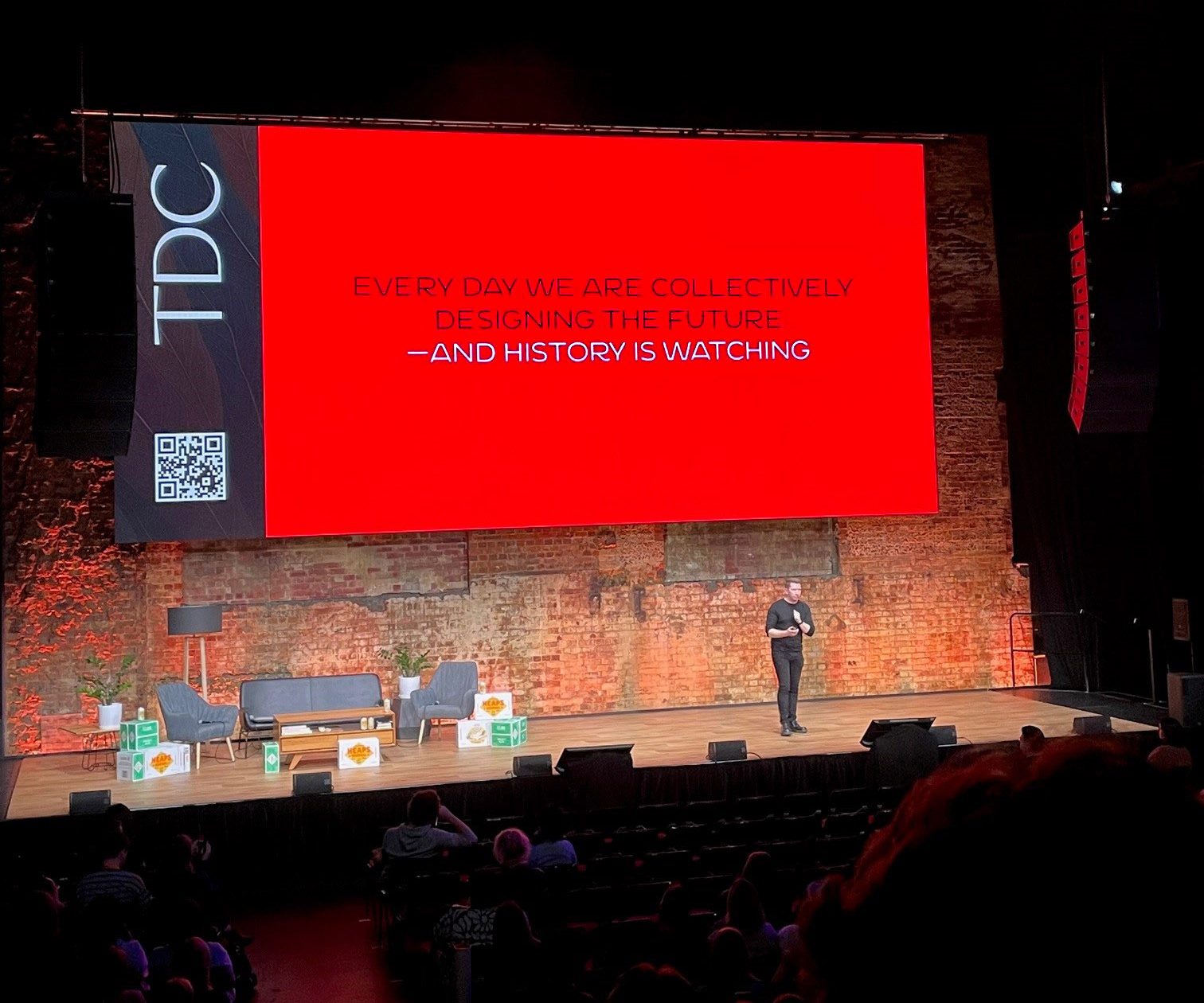
3. Create meaningful design.
“Empathy and understanding is the essential ingredient for good design.” – Meg Perkins
As designers, we must aspire to create meaningful design that goes beyond aesthetics, with the hope of shaping and benefiting the world around us.
In the grips of constant change and technological evolution (and yes, obviously artificial intelligence), the future of design may seem uncertain. We are seeing a shift towards what’s truly important to us as humans – as creators, entrepreneurs, and consumers.
Businesses face mounting pressure to prioritise ethics, environmental sustainability, and social impact, while audiences increasingly seek alignment with brands that share their values.
As Kevin Finn, founder of TheSumOf, spoke about in his fireside session, this means purpose-led brands with impact are forging the way forward. So, be intentional with every decision you make and consider the kind of future you want to work towards.
The Design Conference once again served as a catalyst for personal and collective growth. We are reminded of the impact that design can have – to instil meaning, drive change, shape behaviours and create positive impact for brands and businesses. Thanks to organiser Matt Haynes, the keynote speakers, and everyone involved for another spectacular year!
Looking for help with design? At Focused Marketing we have a team of multi-disciplined designers and creative professionals ready to assist you with your next design, project, or business venture. Contact us today to make it happen!












